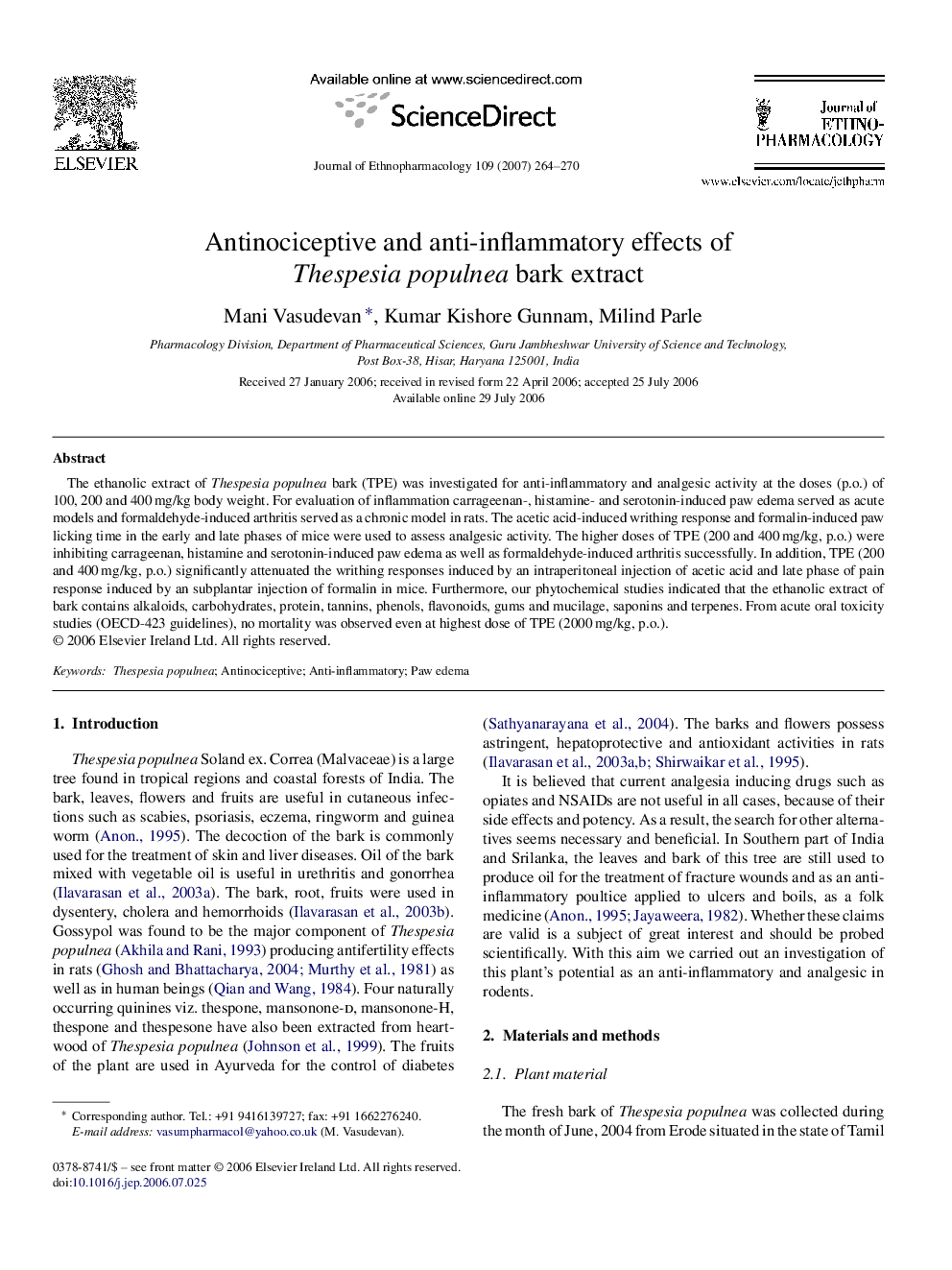| Article ID | Journal | Published Year | Pages | File Type |
|---|---|---|---|---|
| 2548450 | Journal of Ethnopharmacology | 2007 | 7 Pages |
The ethanolic extract of Thespesia populnea bark (TPE) was investigated for anti-inflammatory and analgesic activity at the doses (p.o.) of 100, 200 and 400 mg/kg body weight. For evaluation of inflammation carrageenan-, histamine- and serotonin-induced paw edema served as acute models and formaldehyde-induced arthritis served as a chronic model in rats. The acetic acid-induced writhing response and formalin-induced paw licking time in the early and late phases of mice were used to assess analgesic activity. The higher doses of TPE (200 and 400 mg/kg, p.o.) were inhibiting carrageenan, histamine and serotonin-induced paw edema as well as formaldehyde-induced arthritis successfully. In addition, TPE (200 and 400 mg/kg, p.o.) significantly attenuated the writhing responses induced by an intraperitoneal injection of acetic acid and late phase of pain response induced by an subplantar injection of formalin in mice. Furthermore, our phytochemical studies indicated that the ethanolic extract of bark contains alkaloids, carbohydrates, protein, tannins, phenols, flavonoids, gums and mucilage, saponins and terpenes. From acute oral toxicity studies (OECD-423 guidelines), no mortality was observed even at highest dose of TPE (2000 mg/kg, p.o.).
